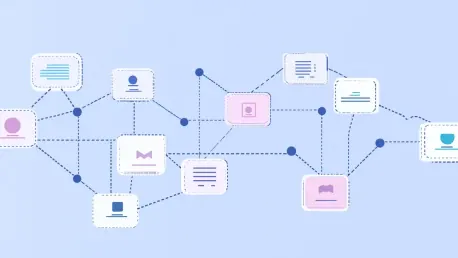In a rapidly evolving digital landscape where audience attention spans are shrinking, the ability of organizations to tailor and deliver their messages effectively has never been more crucial. Leveraging artificial intelligence (AI) to optimize message distribution stands as a formidable advantage, enabling companies to achieve maximum engagement. As AI technology continues to advance, it offers unprecedented insights into audience preferences and behavior, transforming the traditional approach to message distribution into a more dynamic and responsive strategy. By integrating AI into their messaging frameworks, organizations can craft nuanced strategies that not only ensure their messages reach the intended audience but also resonate on a deeper, more personal level.
The Shift from Last-Mile Problem to Strategic Planning
One of the critical shifts in message distribution highlighted by AI integration is moving away from treating it as a last-mile problem. Instead of considering distribution as a final, often rushed step, organizations are encouraged to adopt strategic planning for their messaging campaigns. This shift involves meticulously selecting appropriate channels, determining the optimal time for message release, and continuously refining these choices based on AI-driven insights. AI’s role in this regard is instrumental — it identifies patterns in audience behavior, preferences, and emerging trends, enabling organizations to tailor their strategies accordingly.
Moreover, AI-powered data analytics tools help organizations understand their audience on a granular level. This understanding goes beyond basic demographics, delving into psychographic details and behavioral data that can inform more precise and impactful messaging. For instance, AI can analyze social media interactions, user engagement metrics, and online behavior to predict what type of content will be most appealing to various segments of the audience. By doing so, organizations can ensure that every aspect of their message — from content and format to timing and delivery — is optimized for maximum impact.
Dynamic Distribution Practices and Continuous Feedback Loops
AI also advocates for dynamic distribution practices, emphasizing the need for flexibility and continuous adaptation. Message distribution is not a static, one-time effort but a continuous process that requires real-time adjustments and refinements. AI technology provides real-time tracking of engagement and interaction, enabling organizations to pivot their strategies promptly based on immediate feedback. This dynamic approach allows businesses to experiment with different messaging styles and methods, quickly identifying what works best and discarding ineffective approaches.
An essential component of this dynamic practice is the continuous feedback loop. Organizations must be willing to constantly monitor the effectiveness of their messaging efforts and be prepared to adapt as new data and insights become available. AI facilitates this real-time monitoring, providing detailed analytics on audience engagement, conversion rates, and other critical metrics. This enables businesses to make data-driven decisions, fine-tuning their strategies to ensure that their messages not only reach their target audience but also engage and resonate with them.
Balancing AI Insights with Human Judgment
While AI brings a wealth of insights and capabilities to the table, it is crucial to balance these with human judgment and expertise. AI can process vast amounts of data and identify patterns that might not be immediately apparent to humans, but it cannot fully replace the nuanced understanding and interpretative skills that human experts bring. Human judgment is vital for interpreting AI-generated data, understanding subtle shifts in audience sentiment, and crafting compelling and authentic narratives that resonate on an emotional level.
To this end, engaging seasoned IR advisors and communication experts can be invaluable. These professionals can offer insights into the broader narrative arc, providing strategic guidance on how to sequence and frame messages for maximum impact. They can interpret data in the context of industry trends, organizational goals, and target audience characteristics, ensuring that AI-generated insights are effectively translated into actionable, engaging communication strategies. By combining the analytical capabilities of AI with the creative and strategic acumen of human experts, organizations can create messaging strategies that are both data-informed and deeply resonant.
Authentic, Well-Timed, and Well-Placed Messaging
In today’s rapidly evolving digital landscape, where attention spans are continuously shrinking, the ability for organizations to customize and effectively deliver their messages is more crucial than ever. Artificial intelligence (AI) offers a formidable advantage in optimizing message distribution, enabling businesses to achieve maximum engagement. As AI technology advances, it provides unparalleled insights into audience preferences and behaviors, fundamentally transforming the traditional methods of message distribution into more dynamic and responsive strategies. By integrating AI into their messaging frameworks, organizations can develop sophisticated strategies that not only ensure their messages reach the intended audience but also strike a chord on a deeper, more personal level. This blend of technology and strategy can vastly improve the effectiveness of communication, making interactions more meaningful and impactful, thus fostering stronger connections with the audience.









